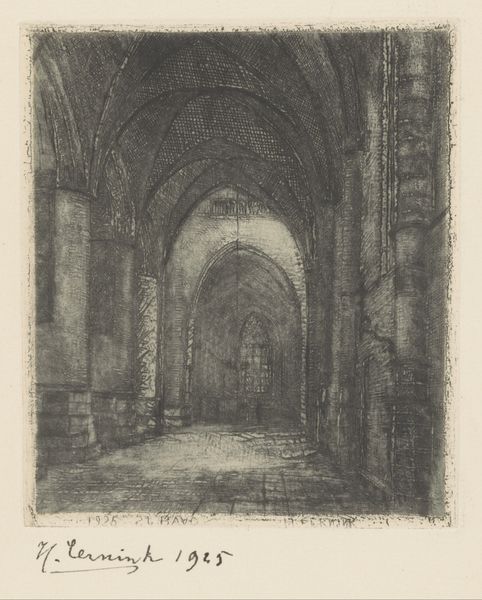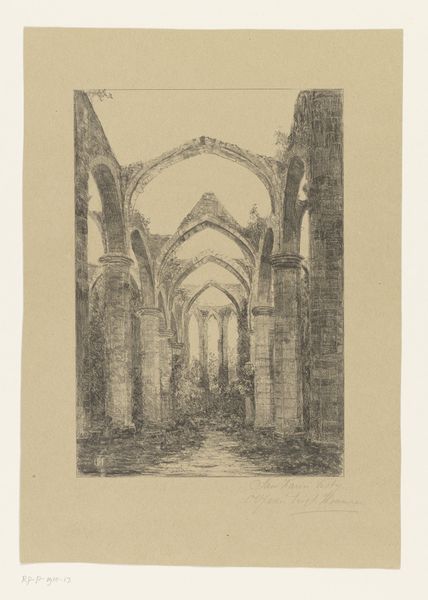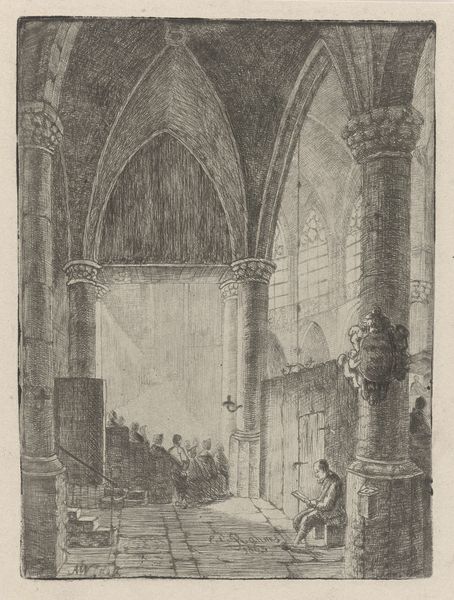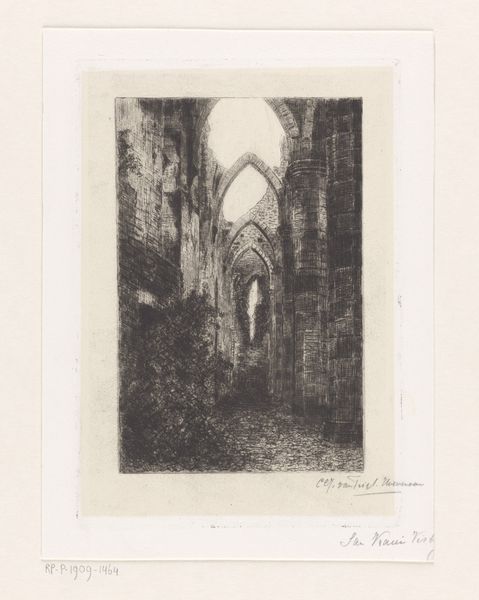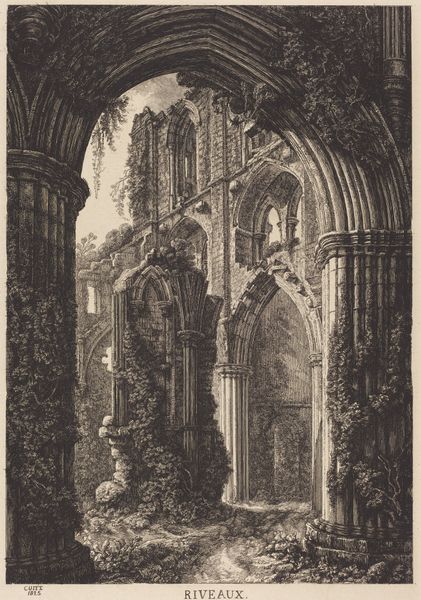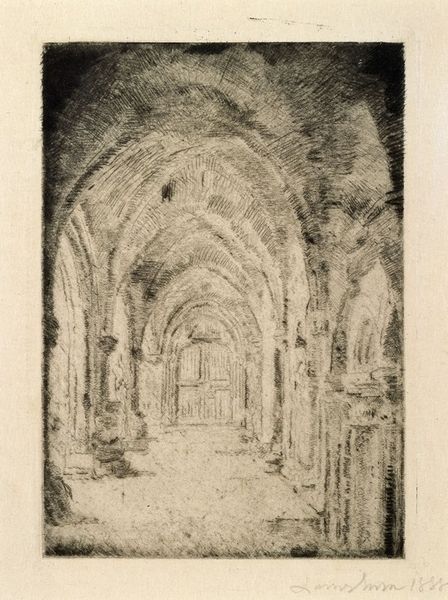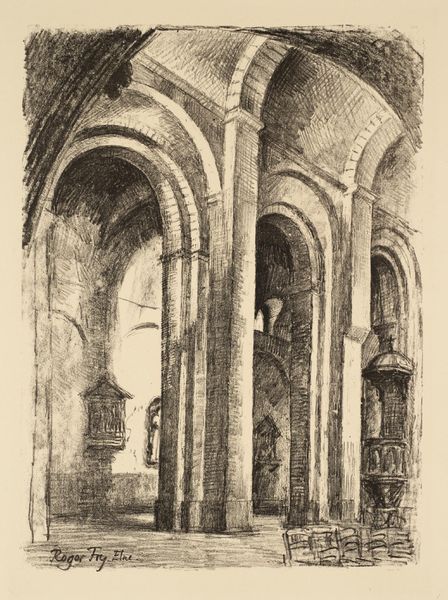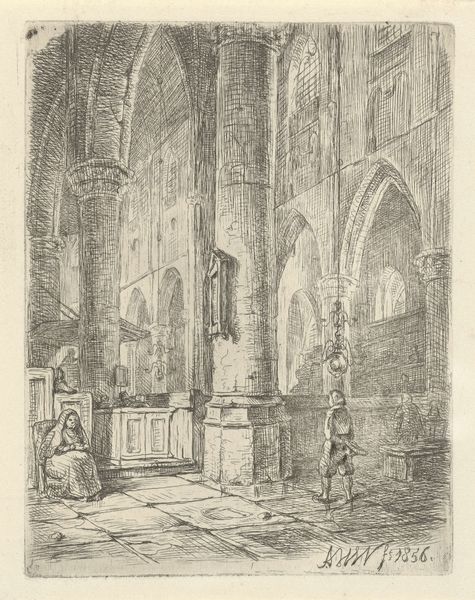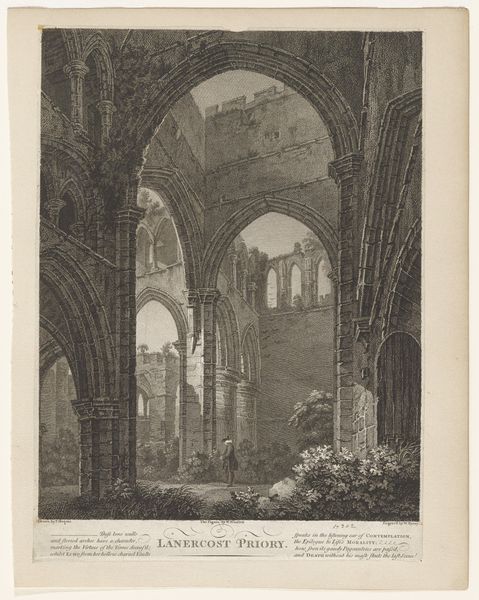
Ruïne van San Karin op Visby 1864 - 1909
0:00
0:00
corneliachristinajohannavantrigthoevenaar
Rijksmuseum
drawing, print, etching, graphite, charcoal
#
drawing
#
medieval
# print
#
etching
#
pencil sketch
#
landscape
#
etching
#
line
#
graphite
#
charcoal
Dimensions: height 322 mm, width 232 mm
Copyright: Rijks Museum: Open Domain
Curator: There's a beautiful desolation about this image. The ruined cathedral arches are so poignant. Editor: I agree; there's a haunted beauty. What are we looking at here? Curator: This etching by Cornelia Christina Johanna van Trigt-Hoevenaar, dating from between 1864 and 1909, depicts "Ruïne van San Karin op Visby," the ruin of Saint Karin in Visby. The piece employs graphite, charcoal, and etching techniques. It's currently held at the Rijksmuseum. Editor: Ah, Visby! The Hanseatic city on Gotland. Makes sense. The light! It's amazing how van Trigt-Hoevenaar uses shadow to imply weight and history in those crumbling stone pillars. They feel incredibly present, like ghosts. Curator: Exactly! The ruin is a potent symbol here. Visby was a significant medieval trading center, so this decay speaks to the transience of power and glory. Even stone crumbles and returns to the earth. The ivy growing throughout almost seems like an act of forgiveness of sorts by Nature herself. Editor: It’s true! The ruin also makes me think about Romanticism's fascination with decay and the sublime. Like looking at the work of Piranesi... there's this powerful pull, maybe this meditation on time and mortality that sucks us in, but makes us contemplate humanity itself! The pencil sketch quality adds an almost dreamlike, insubstantial layer. Like this is fading into memory. Curator: Absolutely. Ruins, like the layered meanings held by powerful symbols over long stretches of time, hold narratives within themselves—of war, abandonment, neglect, resilience… the building has become a container for both communal experience and reflection. Van Trigt-Hoevenaar clearly wants to provoke introspection here. Editor: It worked! I came in thinking “ruin,” left pondering societal constructs, history’s shifting sands, all the things… and damn good use of graphite to boot. I'll be looking for other images by this woman. Curator: Me too. I hadn't really thought about the ruin of a building, its slow dissolution and its reclaiming by nature as a particularly clear expression of hope, not just loss. Fascinating.
Comments
No comments
Be the first to comment and join the conversation on the ultimate creative platform.

